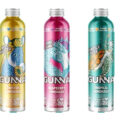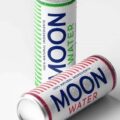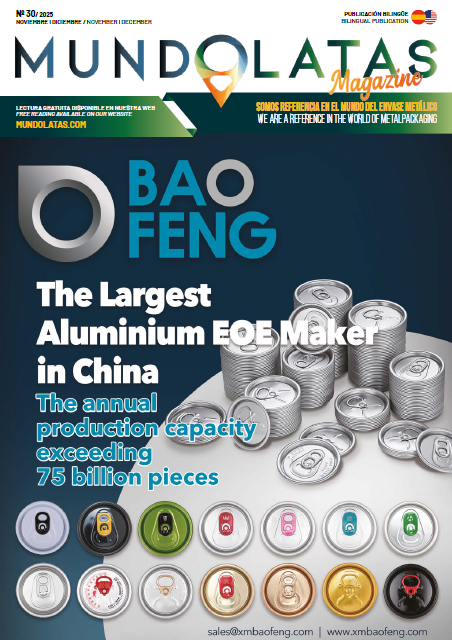Energy Drinks in Aluminum Cans
Introduction
Over the last decade, the energy drinks market has experienced exponential growth. Consumers, looking for a boost to their active and demanding lifestyles, have found energy drinks to be a convenient source of energy. In parallel, the beverage industry has seen an increase in demand for sustainable and efficient packaging solutions, with aluminum cans leading the way.
The Evolution of Packaging
Originally, energy drinks came in plastic and glass bottles. However, aluminum cans have become the industry standard for several reasons. Aluminum’s ability to cool quickly provides consumers with refreshing beverages in less time. In addition, the cans are lightweight, durable and offer superior protection against factors that can affect product quality, such as light and oxygen.
Innovation in Design
Innovation in can design has been a key factor in the success of energy drinks. Modern cans are visually appealing and ergonomically designed for easy handling and consumption. Manufacturers have introduced thinner and taller cans, varying in net quantity and weight, to align with the portable packaging trend.
Health and Functional Aspects
Energy drinks contain a blend of carbohydrates, caffeine, vitamins, protein and electrolytes to provide an immediate energy boost. Aluminum cans are ideal for preserving these active ingredients, maintaining the integrity and efficacy of the beverage. In addition, cans provide a barrier against microbial contamination, which is crucial for maintaining product safety and health.
Sustainability and Recycling
Aluminum is 100% recyclable and can be infinitely recycled without loss of quality. Aluminum cans used for energy drinks contain a high percentage of recycled content and, in turn, can be recycled, which significantly reduces the product’s carbon footprint and promotes sustainable practices.
Challenges and Considerations
Despite the advantages, there are challenges that the industry must address. Initial aluminum production is energy intensive, although recycling can mitigate this impact. In addition, the global recycling infrastructure varies, and not all aluminum cans are effectively recycled. Consumer education and improved recycling facilities are essential to maximize environmental benefits.
Conclusion
Canned energy drinks represent a marriage of functionality and sustainability. As the industry continues to innovate and consumers become more environmentally conscious, aluminum cans will remain a popular choice for energy drink packaging. With a continued focus on design, efficiency and sustainability, the future of energy drinks in cans looks bright and energetic.
aluminum can for canning energy drinks
Choosing the aluminum can for canning energy drinks is considered the best option for several key reasons that benefit both consumers and manufacturers:
- Recyclability: Aluminum is one of the most recyclable materials available. Its ability to be recycled indefinitely without losing quality makes it a sustainable and environmentally friendly option. The recyclability of aluminum also helps to reduce the amount of waste in landfills and reduces the demand for the extraction of new natural resources.
- Product Protection: Aluminum cans provide a superior barrier against light, oxygen and other contaminants, which is essential for maintaining the integrity and efficacy of the active ingredients in energy drinks. This protection helps to preserve the flavor and functional properties of the product for a longer period of time.
- Durability and Safety: Aluminum cans are strong and tamper-proof, making them safe for transport and reducing the risk of damage or breakage. This is especially important for energy drinks, which are often consumed on the move or at outdoor events where durability is a critical factor.
- Cooling Efficiency: Aluminum has excellent thermal properties, allowing beverages to cool quickly. This is particularly beneficial for energy drinks, which are often enjoyed cold to provide instant, revitalizing refreshment.
- Convenience and Portability: Aluminum cans are lightweight and easy to carry, making them convenient for active consumers. In addition, the cans are easy to open and do not require a bottle opener, which increases convenience.
- Marketing and Aesthetics: Aluminum cans offer a smooth surface that is ideal for vibrant and eye-catching graphic designs. This allows energy drink brands to create attractive packaging that stands out on the shelf and captures consumers’ attention.
- Economic Sustainability: Although the initial production of aluminum can be costly, aluminum recycling can significantly reduce these costs. Recycled cans are cheaper to produce than new cans, which can result in savings for manufacturers and, potentially, lower prices for consumers.
In summary, the aluminum can is an excellent choice for canning energy drinks due to its sustainability, product protection, durability, cooling efficiency, convenience and aesthetic appeal. These benefits align with modern consumer demands and responsible business practices, making aluminum cans the preferred choice for energy drinks.
Pros and cons of energy drinks
Energy drinks, which are popular among consumers for their ability to increase energy and concentration, have a number of advantages and disadvantages:
Pros of Energy Drinks:
- Energy Boost: They provide a quick energy boost and can improve mental alertness, which is beneficial for people who need to stay awake and active, such as students, drivers and night workers.
- Physical Performance Enhancement: They contain ingredients such as caffeine and taurine that can improve physical performance and endurance, making them popular with athletes and exercise enthusiasts.
- Convenience: They are easy to consume and transport, making them convenient for those who are on the go and need a quick fix for fatigue.
- Variety of Flavors: They come in a wide range of flavors and options, allowing consumers to choose according to their personal preferences.
- Cognitive Effects: Some studies suggest that they may improve certain cognitive functions such as memory, concentration and reaction speed.
Cons of Energy Drinks:
- Health Problems: The high caffeine and sugar content can lead to health problems such as palpitations, hypertension, nervousness, insomnia and, in extreme cases, cardiovascular problems.
- Dependence and Tolerance: Regular consumption can lead to caffeine dependence and increased tolerance, which means that consumers will need larger amounts to achieve the same effect.
- Drug Interactions: Energy drinks may interact with certain medications and may not be recommended for people with pre-existing medical conditions.
- Dental Problems: The high sugar and acid content can contribute to tooth decay and enamel erosion.
- Risks Associated with Alcohol: The use of energy drinks as mixers with alcohol is common, but can mask the depressant effects of alcohol, leading to excessive consumption and reduced perception of intoxication.
- Nutritional Problems: They can displace more nutritious beverages in the diet, such as water and natural juices, and contribute to excessive caloric intake.
It is important for consumers to be informed about these pros and cons and to consume energy drinks in moderation, paying attention to any signs of adverse effects on their health.
history of energy drinks
The history of energy drinks goes back several decades, where different cultures have sought ways to increase energy and improve physical and mental performance. The following is a brief summary of the evolution of these beverages:
Early Stimulants: Before the existence of modern energy drinks, people consumed natural substances such as tea, coffee and herbal teas to increase energy and alertness.
1960s: The first drink resembling a modern energy drink was “Lipovitan D”, introduced in Japan in 1962. It was aimed primarily at workers and people who needed to combat fatigue.
1980s: In 1987, Dietrich Mateschitz, an Austrian entrepreneur, created Red Bull based on energy drinks he had encountered during his travels in Asia. Red Bull was launched in Austria in 1987 and became the archetype of modern energy drinks.
Global Expansion: During the 1990s and early 2000s, Red Bull and other energy drinks such as Monster and Rockstar began to expand globally, gaining popularity among young people, athletes and busy professionals.
Diversification: Over time, the energy drink market has diversified to include a variety of products offering different flavors, sizes and nutritional compositions, including sugar-free and natural ingredient options.
Continued growth: The energy drinks market has continued to grow, with innovations in marketing, sponsorship of sporting events and music, and collaborations with celebrities to increase its reach.
Debate and Regulation: As energy drinks became more popular, concerns about their safety and health effects also arose. This has led to debates on caffeine regulation and labeling, as well as research on the effects of excessive consumption of these beverages.
The history of energy drinks is a reflection of the constant demand for energy and performance enhancing products. Despite the challenges and controversy, energy drinks remain a significant and growing segment of the beverage industry.
Future of energy drinks in aluminum cans
The future of energy drinks in aluminum cans looks promising and is expected to continue to grow, driven by several factors:
- Product Innovation: Energy drink brands are constantly innovating to meet consumer demand for healthier and more functional products. This could include the development of beverages with natural ingredients, less sugar, and additions of supplements such as vitamins and electrolytes.
- Sustainability: Sustainability will continue to be a central theme. Aluminum cans are fully recyclable and the industry is expected to continue to improve its sustainability practices, including the use of recycled materials and the reduction of the carbon footprint in production and distribution.
- Consumer Preferences: The shift in consumer preferences toward more sustainable packaging options could favor aluminum cans over other materials such as plastic.
- Marketing and Positioning: Marketing campaigns and positioning energy drinks as lifestyle products will continue to be important to attract new consumers and maintain brand loyalty.
- Geographic Expansion: The market for energy drinks in aluminum cans is expected to grow in emerging markets where urbanization and disposable incomes are increasing.
- Regulation: Government regulations and public health policies could influence the market, either by restricting marketing to certain demographic groups or by imposing limits on the amount of caffeine and sugar.
- Collaborations and Diversification: We are likely to see more collaborations between energy drink brands and other industries, as well as diversification into new market segments, such as energy drinks targeted at specific consumer niches.
- Packaging Technology: Improvements in packaging technology could lead to lighter and stronger cans, as well as new shapes and sizes that improve convenience and consumer appeal.
In summary, the market for energy drinks in aluminum cans has a bright future, with opportunities for continued innovation and growth. However, it will also face challenges in terms of regulations and public health concerns that could shape its evolution.














